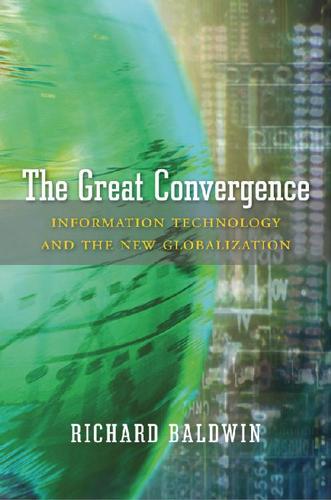
The Great Convergence: Information Technology and the New Globalization
by
Richard Baldwin
Published 14 Nov 2016
It is important to recognize two things about the pains of globalization. First, there is no gain from globalization without pain. Second, the solution to this dilemma is to establish a “social contract” that gives all citizens a stake in the gains and a share of the pains. The New Economic Geography The second package of economic logic, the New Economic Geography—known affectionately as NEG by aficionados—explains the riddle of uneven spatial development, which, simply put, is: How can lower trade cost—which should make distance matter less—produce such dramatically unbalanced distributions of economic activity such as cities, and the G7’s outsize share of world gross domestic product (GDP)?
…
See also comparative (competitive) advantage; coordination; land; offshoring; policies; smuggling; spillovers; tariffs and protectionism; unions, labor Netherlands, 56, 235. See also imperialists New Economic Geography (NEG) , 179, 186–196, 189f, 194f, 208–211, 214 The New Geography of Jobs (Moretti), 228, 233, 235 New Globalization (Phase Four) (second unbundling): control and, 174–175, 176; endogenous growth/New Economic Geography and, 193–196, 194f; industrialization and, 7, 8; know-how and, 139; mental models and, 112, 113; moving ideas and, 161–162; North-South back-and-forth trade and, 97; North-South borders and, 151; North-South shift in manufacturing and, 7, 86–89, 142–145; Old Globalization (first unbundling) compared, 6, 138–141, 142–176, 166f–169, 177–220, 221; pace of change and, 170–171, 174, 176; poverty and, 105, 108f, 162–163, 242; predictability and, 171–172, 176; protectionism and, 98, 99–102; summaries, 6, 7, 10–14, 19, 48f–49, 77–78, 109–110, 142–277; winners and losers, 160–164.
…
To account for the really broad-brush facts of globalization’s first unbundling, it is necessary to adjoin a few more elements to the Ricardian picture. The formal brushstokes were added by Nobel Prize–winning economist Paul Krugman and his coauthors Oxford professor Tony Venables and Kyoto professor Masahisa Fujita. The key ideas of the “new economic geography,” from their book The Spatial Economy, are explained in Chapter 6, but the main lines of logic can be extracted from the historical account in Chapter 2. FIGURE 39: Dynamic comparative advantage: trade, comparative advantage, innovation, and growth are all entwined. Globalization’s first acceleration (that is, the first unbundling) turned the world’s league tables on their head.

Why Information Grows: The Evolution of Order, From Atoms to Economies
by
Cesar Hidalgo
Published 1 Jun 2015
These include the neoclassical approaches of Paul Krugman, Masahisa Fujita, and Anthony Venables. As described by Krugman, the new economic geography is a theoretical effort to figure out why industries would locate in a certain location (agglomeration). The goal of the new economic geography is to develop general-equilibrium models that are completely endogenous. These are models where constraints on both money and resources are honored, and where supply, demand, and population are determined endogenously from the models. To achieve its goal, the new economic geography uses a number of theoretical tricks that help make these models tractable. These include the use of Dixit and Stiglitz’s monopolistic competition model (Avinash K.
…
In fact, early efforts to calibrate the models found that these have a tendency to agglomerate that was stronger than that observed in the real economy (see, for example, Paul Krugman, “What’s New About the New Economic Geography?,” Oxford Review of Economic Policy 14, no. 2 [1998]: 7–17), and more recent attempts to find evidence have generated more discussion than answers (see, for example, Stephen J. Redding, “The Empirics of the New Economic Geography,” Journal of Regional Science 50, no. 1 [2010]: 297–311). Another approach that hinges on individuals, albeit differently from the approach followed by the new economic geographers, is the work of urban theorist Richard Florida.
…
Norbert Wiener, The Human Use of Human Beings: Cybernetics and Society (Boston: Houghton Mifflin, 1950). CHAPTER 6: THIS TIME, IT’S PERSONAL 1. The question of which industries locate where and why has given rise to at least four theoretical streams of literature: the literature on industrial clusters, the “new economic geography” (which is the neoclassical stream of this literature), the economic geography literature focusing on institutions and culture, and the evolutionary economic geography literature. One could argue that these different strands of literature reflect academic alliances and divisions, but I will describe them not in terms of academic divisions but in terms of how they conceptualize sources of economic advantage and the patterns of industrial diversification and specialization found in different locations.

The New Class Conflict
by
Joel Kotkin
Published 31 Aug 2014
Aaron M. Renn, “Is Urbanism the New Trickle-Down Economics?” New Geography, February 7, 2013, http://www.newgeography.com/content/003470-is-urbanism-new-trickle-down-economics; Richard Florida, “More Losers Than Winners in America’s New Economic Geography,” CityLab, January 30, 2013, http://www.citylab.com/work/2013/01/more-losers-winners-americas-new-economic-geography/4465. 42. Joel Kotkin, “The Geography of Aging: Why Millennials Are Headed to the Suburbs,” New Geography, December 9, 2013, http://www.newgeography.com/content/004084-the-geography-of-aging-why-millennials-are-headed-to-the-suburbs. 43.
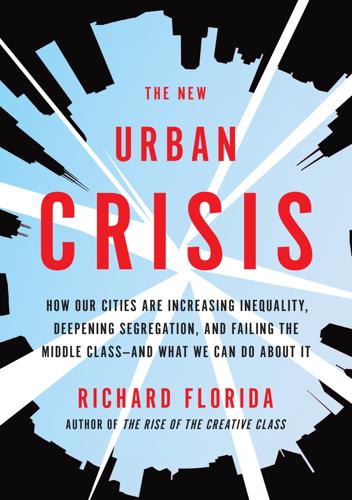
The New Urban Crisis: How Our Cities Are Increasing Inequality, Deepening Segregation, and Failing the Middle Class?and What We Can Do About It
by
Richard Florida
Published 9 May 2016
Thomas Piketty, Capital in the Twenty-First Century (Cambridge, MA: Belknap Press of Harvard University Press, 2013); Richard Florida, “The New American Dream,” Washington Monthly, March 2003; Richard Florida, The Flight of the Creative Class (New York: HarperCollins, 2005). 4. Richard Florida, “More Losers Than Winners in America’s New Economic Geography,” CityLab, January 30, 2013, www.citylab.com/work/2013/01/more-losers-winners-americas-new-economic-geography/4465. 5. Joel Kotkin, “Richard Florida Concedes the Limits of the Creative Class,” Daily Beast, March 20, 2013, www.thedailybeast.com/articles/2013/03/20/richard-florida-concedes-the-limits-of-the-creative-class.html; Richard Florida, “Did I Abandon My Creative Class Theory?

Connectography: Mapping the Future of Global Civilization
by
Parag Khanna
Published 18 Apr 2016
There are more such inter-city networks today than international organizations. 12. EUROPE FRAGMENTS AS IT GROWS TOGETHER Credit pai1.12 Europe has a substantial number of separatist movements, but even as it devolves, new nations can become members of the collective European Union (EU). 13. MEGACITIES AS THE NEW ECONOMIC GEOGRAPHY Credit pai1.13 Urban archipelagos represent a growing share of national economies. Moscow, São Paulo, Lagos, and Johannesburg are representative of growth markets where one city dominates the economic landscape. 14. AFRICA’S REMAINING FAULT LINES Credit pai1.14 Africa’s map still features many separatist movements that could lead to the creation of new states, as well as a large number of effectively autonomous provinces within African countries. 15.
…
Created by University of Wisconsin–Madison Cartography Laboratory. City Leadership Initiative; C40 Cities; University College London (UCL). pai1.12 Europe Fragments as It Grows Together. Created by University of Wisconsin–Madison Cartography Laboratory. Business Insider; European Free Alliance; Natural Earth; Wikipedia. pai1.13 Megacities as the New Economic Geography. Created by University of Wisconsin–Madison Cartography Laboratory. Brookings Institution; International Monetary Fund; Lagos Bureau of Statistics; Natural Earth; Oak Ridge National Library. pai1.14 Africa’s Remaining Fault Lines. Created by University of Wisconsin–Madison Cartography Laboratory.

Aerotropolis
by
John D. Kasarda
and
Greg Lindsay
Published 2 Jan 2009
It might be reflected in property values around the hub, or in rents and occupancy rates for office and warehouse space. It can even be seen in the average household incomes of local residents—$172,945 in Southlake, compared to $105,000 in Virginia’s Loudon and Fairfax counties, which share Dulles. The aerotropolis represents what Kasarda describes as a new economic geography, which takes the relationship of location and connectivity into account and prices their true worth accordingly. He didn’t have a chance to apply his theorem to DFW; someone beat him to it. The Aerotropolis on the Hills A few of the glittering towers featured in the opening credits of Dallas are found not downtown but on DFW’s eastern flank, opposite Southlake and Euless.
…
It’s the largest business district from here to Chicago. Carpenter intuitively understood Kasarda’s Law, and so do his disciples at the local Chamber of Commerce. “We sell three things,” its executive director told me, “location, accessibility, and speed.” As sterile as it sounds, Las Colinas is proof of this new economic geography. Fluor’s peripatetic executives turn out to be the exception, not the rule. The majority of inhabitants shuttle only between their cubicles and home. What’s changed is the premium tenants pay for the potential connectivity of the airport. It’s ten minutes away if they need it, and often they do— more and more, in fact.

The Great Reset: How the Post-Crash Economy Will Change the Way We Live and Work
by
Richard Florida
Published 22 Apr 2010
As often as not, that group effort extended beyond the immediate household. How many of us have grown up hearing about the old neighborhood of their parents’ or grandparents’ generation: aunts and uncles and cousins and grandparents living up and down the block or around the corner, all part of a unified support system. That, however, would change with the new economic geography of the Second Reset, as more and more people moved away from these dense and cohesive enclaves to find more privacy and freedom—their private piece of the dream in the new suburbs. Suburbanization had actually begun in the first few decades of the century. As electrical power grids, along with rail and streetcar lines, extended beyond old city limits, construction and population followed.
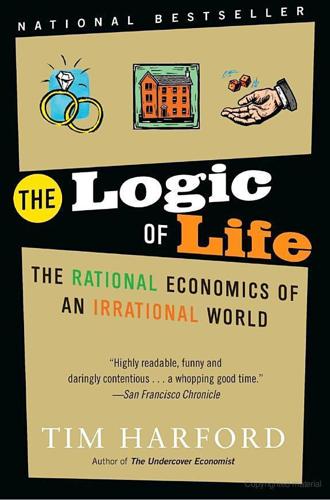
The Logic of Life: The Rational Economics of an Irrational World
by
Tim Harford
Published 1 Jan 2008
Jaffe, Manuel Trajtenberg, and Rebecca Henderson, “Geographic Localization of Knowledge Spillovers as Evidenced by Patent Citations,” Quarterly Journal of Economics 108, no. 3(August 1993): 577–98. I also interviewed Adam Jaffe in November 2006. To see the reason: The canonical model of this argument is the paper that launched the so-called New Economic Geography, Paul Krugman’s elegant “Increasing Returns and Economic Geography,” Journal of Political Economy 99, no. 3(June 1991): 483–99. This and many other Krugman academic papers are available at math.stanford.edu/~lekheng/ krugman/index.html. Looking at the location: David B. Audretsch and Maryann P.
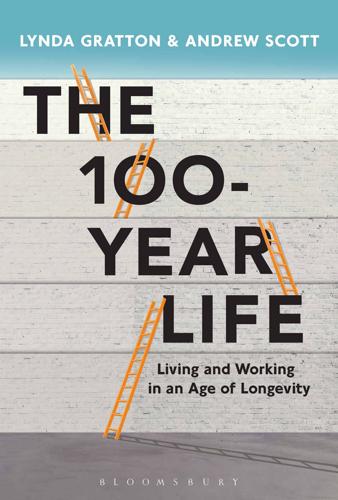
The 100-Year Life: Living and Working in an Age of Longevity
by
Lynda Gratton
and
Andrew Scott
Published 1 Jun 2016
The term ‘galumphing’ is taken from Lewis Carroll’s poem ‘Jabberwocky’ in Through the Looking-Glass (1871). 9Rainwater, J., Self-Therapy (Crucible, 1989), 9. 10Giddens, Modernity and Self-Identity (Stanford University Press, 1991). 11Scharmer, O., Theory U: Leading from the Future as it Emerges (Berrett-Koehler, 2009). 12Bennis, W. and Thomas, R., ‘Crucibles of Leadership’, Harvard Business Review 80 (9) (2002): 39–46. 13Mirvis, P., ‘Executive Development Through Consciousness-raising Experiences’, Academy of Management Learning & Education 7 (2) (2008): 173–88. 14Deal, J. and Levenson, A., What Millennials Want from Work: How to Maximize Engagement in Today’s Workforce (Center for Creative Leadership; McGraw-Hill, 2016). 15Scharmer, Theory U. 16The novel The Makers by Corey Doctorow is a good fictional explanation of this lifestyle and accreditation process although that novel focuses on how these trends subvert existing organizational trends. 17http://www.kauffman.org/~/media/kauffman_org/research%20reports%20and%20covers/2015/05/kauffman_index_startup_activity_national_trends_2015.pdf 18See Moretti, ‘The New Economic Geography of Jobs’ for a detailed analysis of this specific issue; or Glaeser, E., ‘Triumph of the City’ (Macmillan, 2011) for the general advantages of cities in terms of innovation and creativity from connectedness, scale and competition. 19http://www.economist.com/news/leaders/21573104-internet-everything-hire-rise-sharing-economy 20Ibarra, H., Working Identity: Unconventional Strategies for Reinventing Your Career (Harvard Business School Press, 2003).
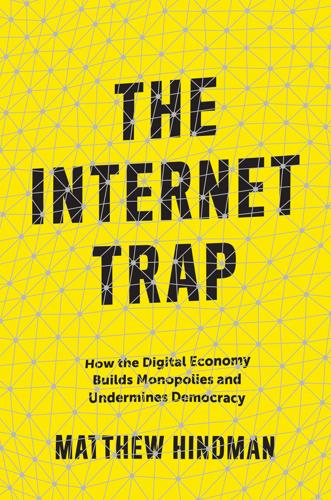
The Internet Trap: How the Digital Economy Builds Monopolies and Undermines Democracy
by
Matthew Hindman
Published 24 Sep 2018
For example, it predicted that countries with the largest domestic markets would end up being net exporters—something that turned out to be true. This chapter is about building simple economic models of online content production. The style of these models owes much to the so-called “increasing returns revolution” that began in the industrial organization literature,3 and then found expression in the “new trade theory” and in the “new economic geography” scholarship that Krugman’s work exemplified. This parallel is no accident. If economic geography studies the production and consumption of goods in space, much of this book is about understanding where content will be produced and consumed in cyberspace. There is a clear analogy between the industrial agglomeration we see in the real world, and the traffic concentration we see online.
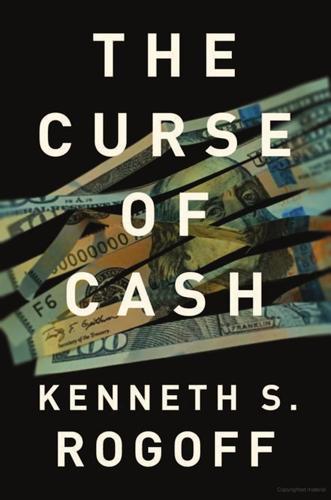
The Curse of Cash
by
Kenneth S Rogoff
Published 29 Aug 2016
In Proceedings of the Kansas City Federal Reserve Bank Symposium on Monetary Policy and Uncertainty: Adapting to a Changing Economy, Jackson Hole, WY, August 28–30, 2003. Kansas City Federal Reserve Bank. ———. 2007. “Impact of Globalization on Monetary Policy.” In Proceedings of the Kansas City Federal Reserve Bank Symposium on the New Economic Geography: Effects and Policy Implications, Jackson Hole, WY, August 2006. Kansas City Federal Reserve Bank. ———. 2008. “Inflation Is Now the Lesser Evil.” Project Syndicate, December. Available at http://www.project-syndicate.org/commentary/inflation-is-now-the-lesser-evil. ———. 2014. “Costs and Benefits to Phasing Out Paper Currency.”
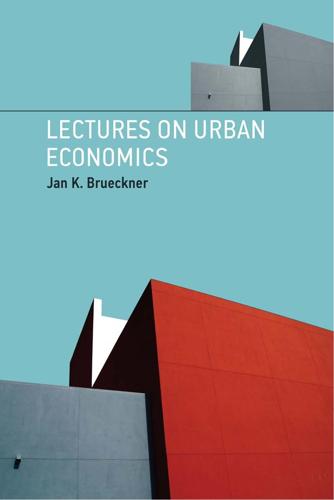
Lectures on Urban Economics
by
Jan K. Brueckner
Published 14 May 2011
Since the book has grown out of my own research on a variety of topics in urban economics, the references include an unavoidably large number of my own papers. Other researchers should recognize that this pattern does not reflect an opinion about relative contributions to the field. Again reflecting my own interests within urban economics, the book contains less material on the New Economic Geography, an area of active research in the field since the early 1990s, than would a book written by an NEG researcher. The material relevant to NEG is confined to chapter 1. The book’s suitability as a text for an undergraduate course in urban economics, or for a series of such courses, would depend on the length of the course(s).

Democracy and Prosperity: Reinventing Capitalism Through a Turbulent Century
by
Torben Iversen
and
David Soskice
Published 5 Feb 2019
Hall and David Soskice, 145–83. Oxford: Oxford University Press. Eurofound. 2015. “Workplace Practices—Patterns, Performance, and Well-being.” Third European Company Survey, Overview Report. Luxembourg: Publications Office of the European Union. Feldmann, Maryann P. 2000. “Location and Innovation: The New Economic Geography of Innovation, Spillovers, and Agglomeration.” In The Oxford Handbook of Economic Geography, eds. Gordon Clark, Mayann P. Feldmann, Meric Gertler, and Kate Williams, 373–94. Oxford: Oxford University Press. Fioretos, Orfeo. 2011. Creative Reconstructions: Multilateralism and European Varieties of Capitalism after 1950.
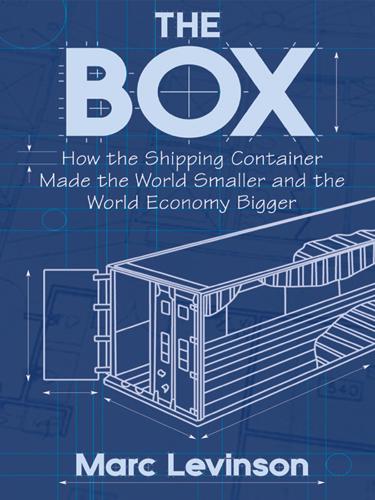
The Box: How the Shipping Container Made the World Smaller and the World Economy Bigger
by
Marc Levinson
Published 1 Jan 2006
Poor countries, desperate to climb the rungs of the ladder of economic development, could realistically dream of becoming suppliers to wealthy countries far away. Huge industrial complexes mushroomed in places like Los Angeles and Hong Kong, only because the cost of bringing raw materials in and sending finished goods out had dropped like a stone.1 This new economic geography allowed firms whose ambitions had been purely domestic to become international companies, exporting their products almost as effortlessly as selling them nearby. If they did, though, they soon discovered that cheaper shipping benefited manufacturers in Thailand or Italy just as much. Those who had no wish to go international, who sought only to serve their local clientele, learned that they had no choice: like it or not, they were competing globally because the global market was coming to them.

Vanishing New York
by
Jeremiah Moss
Published 19 May 2017
, citing Leo Goldberg, “Game of Zones: Neighborhood Rezonings and Uneven Urban Growth in Bloomberg’s New York City” (M.C.P. thesis, Massachusetts Institute of Technology, 2015). 301Cynthia Cornell, quoted in Brendan Bartholomew, “Gentrification Evictions Could Amount to Elder Abuse,” San Francisco Examiner, March 10, 2016. 302Robin Middleton, quoted by Harlem historian and activist Michael Henry Adams on his Facebook page. 314On chains and “bourgeoisie aestheticism,” see Daniel Akst, “On the Contrary; Why Chain Stores Aren’t the Big Bad Wolf,” New York Times, June 3, 2001. 22 GENTRIFIERS AND THE NEW MANIFEST DESTINY 322“Artists: NYC Is Not for Sale,” discussion, part of the Decolonize This Place project, October 29, 2016. 323Manuel Castells, The City and the Grassroots: A Cross-Cultural Theory of Urban Social Movements (Berkeley: University of California Press, 1984). 324Jamie Peck, “Struggling with the Creative Class,” International Journal of Urban and Regional Research 29, no. 4 (2005). 324Bloomberg’s transportation commissioner knew well: Samuel Stein, “Bike Lanes and Gentrification: New York City’s Shades of Green,” Progressive Planning, no. 188 (Summer 2011). 323–325Richard Florida, “The Creative Class and Economic Development,” Economic Development Quarterly 28, no. 3 (2014); Richard Florida, “More Losers Than Winners in America’s New Economic Geography,” CityLab, January 30, 2013. On the dark side: Lydia De-Pillis, “The Re-education of Richard Florida,” Houston Chronicle, October 24, 2016. 23 BROOKLYN 331Truman Capote, “Brooklyn Heights: A Personal Memoir,” Holiday, February 1959. 335–336Mark Greif, What Was the Hipster? A Sociological Investigation (New York: n+1 Foundation, 2010), and “What Was the Hipster,” New York, October 24, 2010. 338On Williamsburg racial shift of population, see Philip DePaolo and Sylvia Morse, “Williamsburg: Zoning Out Latinos,” in Angotti and Morse, eds., Zoned Out!

Make Your Own Job: How the Entrepreneurial Work Ethic Exhausted America
by
Erik Baker
Published 13 Jan 2025
For most of the twentieth century, entrepreneurialism was fundamentally a progressive philosophy, even when it wasn’t progressive in today’s political sense. Its advocates imagined themselves producing a survival guide for an era of historical transformation. The old world was dying and a new world was being born: a new set of core industries, a new economic geography, a new set of principles governing success and failure. Being entrepreneurial meant being willing to shake off the old ways and master the new realities; it meant striving to harness the winds of turbulence, to emerge empowered and prosperous from the difficult interregnum. As the language of the “New Economy” suggested, however, in the late twentieth century it increasingly seemed that the transition was at last complete.
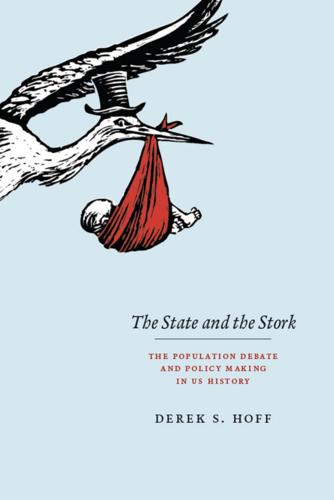
The State and the Stork: The Population Debate and Policy Making in US History
by
Derek S. Hoff
Published 30 May 2012
Economist Ralph Hess suggested in The Foundations of National Prosperity, a 1917 collection of essays edited by Richard Ely, “Settlement and industries should be so located as to secure the fullest possible benefits from the natural resources of the country, as well as the benefits of mechanical development and scientific discoveries.”160 Meanwhile, the spread of electrification in the 1920s enhanced the locational flexibility of American firms—and thus supported calls for the state to engineer new economic geographies.161 Resource economists focused on localized pockets of overpopulation where resources had become exhausted but people remained—for example in Appalachia and in the “cut-over” lands of northern Wisconsin and Minnesota, where the timber industry left depleted forests and an economically redundant surplus population in its wake.162 Within the federal government, a Department of Labor study called Employment and Natural Resources, penned by Benton MacKaye, subsequently a co-founder of the Wilderness Society and a leading midcentury conservationist, called for new governmentsponsored communities on public lands to combat inefficient land use (and the deceasing real wages of the American worker).163 US Department of Agriculture economists also promoted the idea of engineering population movements.

The Discovery of France
by
Graham Robb
Published 1 Jan 2007
These missionary organizations trained guides and porters, persuaded rival villages to work together, laid out signposted walks and organized ‘caravanes scolaires’ and ‘colonies de vacances’ for schoolchildren. They also encouraged hotels to display their prices and not overcharge tourists. Long before paid holidays for workers were introduced in 1936, a new economic geography of France was taking shape: the Vosges were the Alps of the petite bourgeoisie, and the mountains of the Auvergne were the poor man’s Pyrenees.40 The touring clubs were pioneers in the tradition of the eighteenth-century map-makers. They not only popularized obscure parts of France, they also discovered them.
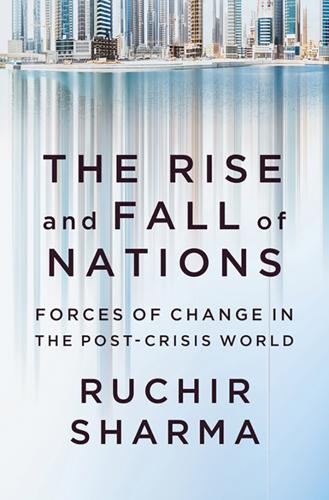
The Rise and Fall of Nations: Forces of Change in the Post-Crisis World
by
Ruchir Sharma
Published 5 Jun 2016
Essien, Victor. “Regional Trade Agreements in Africa: A Historical and Bibliographic Account of ECOWAS and CEMAC.” NYU Global, 2006. “Fortnightly Thoughts: Brighter Lights, Bigger Cities.” Goldman Sachs Global Investment Research, November 21, 2013. Fujita, Masahisa, and Paul Krugman. “The New Economic Geography: Past, Present, and the Future.” Papers in Regional Science 83 (2004): 139–64. Glaeser, Edward L., and Albert Saiz. “The Rise of the Skilled City.” National Bureau of Economic Research, Working Paper no. 10191, December 2003. Guha, Ramachandra. “Ideas of Public Service.” Telegraph, July 11, 2015.

City: Urbanism and Its End
by
Douglas W. Rae
Published 15 Jan 2003
No store can be insured against the disappearance of its customers or the obsolescence of its merchandise. No profitable line of business—from hotels to stores specializing in caged birds, from stationery stores to saloons—will stand for long undisturbed by the curiosity of would-be competitors. No place—city, suburb, hamlet, or farmstead—is secure against the emergence of a new economic geography that drains vital populations and investments in the space of a few decades. In seeking ever fresh forms of production, ever larger markets, ever higher returns on investment, capitalism routinely destroys older ways of doing business, older technologies, older plants—and in so doing profoundly transforms the communities that have formed around them.

The Meritocracy Trap: How America's Foundational Myth Feeds Inequality, Dismantles the Middle Class, and Devours the Elite
by
Daniel Markovits
Published 14 Sep 2019
all average nearly 50 percent: See Paul A. Jargowsky, “Take the Money and Run: Economic Segregation in U.S. Metropolitan Areas,” American Sociology Review 61, no. 6 (1996): 984–98. Hereafter cited as Jargowsky, “Take the Money and Run.” Bishop, The Big Sort, 131. Richard Florida, “More Losers Than Winners in America’s New Economic Geography,” CityLab, January 30, 2013, accessed November 19, 2018, http://www.citylab.com/work/2013/01/more-losers-winners-americas-new-economic-geograpy/4465/. fell by 15 percent: See Catherine Rampell, “Who Says New York Is Not Affordable?,” New York Times Magazine, April 23, 2013, accessed November 19, 2018, www.nytimes.com/2013/04/28/magazine/who-says-new-york-is-not-affordable.html.